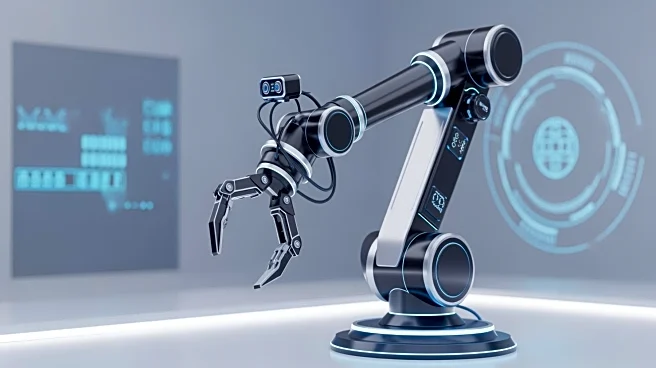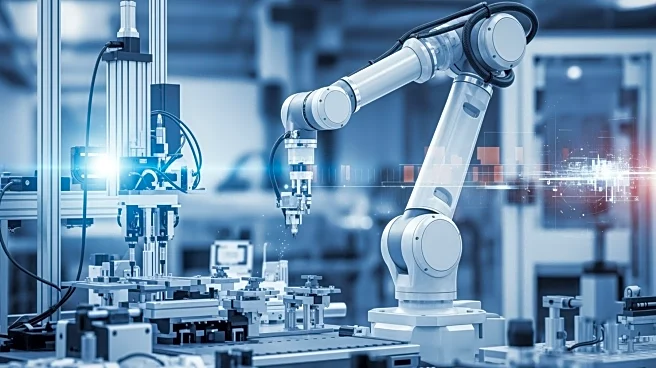What's Happening?
Researchers at Chemnitz University of Technology and the European Centre for Living Technology in Venice have developed microrobots using origami membranes that can self-fold into cube-like structures.
These microrobots can self-assemble into larger, more complex formations. The interior of these robots can house rigid microcomponents, such as silicon chiplets for processing and micro-light-emitting diodes (μLEDs) for communication. The edges of the robots can host rolled organic solar cells for energy harvesting. The team has optimized the integration of these components using automated lithography and microchiplet bump-binding processes, making the production cost-effective. The microrobots can communicate via a green μLED, transmitting data at a rate of up to 1,000 Hz over a distance of 4 mm.
Why It's Important?
This development in microrobot technology could have significant implications for various industries, including telecommunications, manufacturing, and healthcare. The ability of these robots to self-assemble and communicate could lead to advancements in swarm robotics, where multiple robots work together to perform complex tasks. This technology could be used in environments that are hazardous or inaccessible to humans, such as deep-sea exploration or space missions. Additionally, the energy-efficient design of these microrobots, powered by organic solar cells, highlights the potential for sustainable robotic solutions. The research underscores the importance of interdisciplinary collaboration in advancing robotic technologies.
What's Next?
Further research will likely focus on enhancing the capabilities of these microrobots, such as increasing their communication range and improving their energy efficiency. Potential applications in various fields will be explored, including their use in medical procedures, environmental monitoring, and industrial automation. The development of these microrobots may also prompt discussions on the ethical implications of autonomous robotic systems, particularly in terms of privacy and security. As the technology matures, regulatory frameworks will need to be established to ensure safe and responsible deployment.











